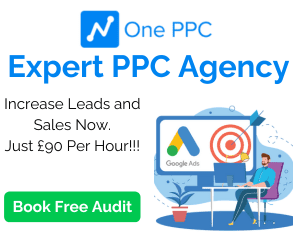In the realm of search engine marketing, having the right tools and strategies can make all the difference in the success of your advertising campaigns. One such tool that stands out as invaluable is Google Ads Keyword Planner. If you’re looking to optimise your campaigns and effectively reach your target audience, this comprehensive blog post is here to equip you with the knowledge and strategies needed to master Google Ads Keyword Planner and conduct impactful keyword research.
At the core of any successful advertising campaign lies the discovery and selection of the right keywords. With Google Ads Keyword Planner, advertisers can streamline their keyword research process, gaining access to a wealth of insights and data that can propel their campaigns forward. This comprehensive guide is designed to provide you with an in-depth understanding of Google Ads Keyword Planner, its features, and the benefits it offers to marketers like you.
By leveraging the power of Google Ads Keyword Planner, you can uncover valuable insights about your target market’s search behavior, discover relevant keywords that resonate with your audience, and refine your ad targeting to maximise your advertising return on investment (ROI). It serves as your compass, guiding you towards the keywords that hold the potential to unlock the full potential of your campaigns.
Throughout this blog post, we will explore the features and benefits of Google Ads Keyword Planner, empowering you with the knowledge and strategies needed to conduct effective keyword research. From understanding search volume and competition levels to utilising suggested bid estimates and negative keywords, we will delve into the tools and techniques that will help you optimise your campaigns and create a platform for your advertising endeavors to thrive.
Table of Contents
- What Is Google's Keyword Planner?
- Types of Keywords
- Why Use The Google Keyword Planner?
- The Importance of Keyword Research
- How To Use Google Keyword Planner
- Understanding Keyword Metrics:
- Using Keyword Planner for Campaign Planning:
- Tips for Using the Keyword Planner
- Searching For Keyword & Ad Group Ideas
- Targeting Filter
- Customise Your Search
- Ad Groups Ideas or Keyword Ideas
- Conclusion
What Is Google's Keyword Planner?
Google Ads Keyword Planner is a powerful tool provided by Google, designed to assist advertisers in researching and discovering relevant keywords for their advertising campaigns. It offers valuable insights into search volume, competition levels, and suggested bid estimates for various keywords.
For those with a Google Ads account, Keyword Planner is an essential tool for both new and experienced advertisers. Whether you’re starting a new Search Network campaign or looking to optimise an existing one, Keyword Planner provides the data and functionality to make informed decisions.
One of the primary uses of Keyword Planner is to search for important keywords related to your business or industry. By entering relevant terms, website URLs, or product categories, you can generate a list of keyword ideas that are likely to resonate with your target audience. This allows you to align your ad campaigns with the search behaviour and interests of potential customers.
In addition to suggesting keywords, Keyword Planner enables you to evaluate how specific keywords would perform as part of your marketing campaign. By analysing search volume trends and competition levels, you can gauge the potential reach and impact of your chosen keywords. This information helps you prioritise keywords that have a higher likelihood of driving relevant traffic to your website.
Moreover, Keyword Planner assists in budget planning and bid optimisation within your campaigns. By providing suggested bid estimates, it helps you determine the appropriate budget allocation for different keywords and set competitive bids to enhance your ad positioning. This ensures that you are maximising your advertising budget by investing in keywords that offer the best potential return on investment.
While the transition from the old Google Keyword Tool to Keyword Planner may have presented challenges for some marketers, the importance of keyword research remains unchanged. Understanding what your target audience is searching for is crucial for optimising your content, improving your organic search rankings, and creating effective ad campaigns.
Keyword Planner serves as a reliable replacement for the previous tool, offering similar functionalities with added features and a more user-friendly interface. By utilising this tool effectively, you can lay the foundation for a successful SEO strategy by identifying the right keywords to target and tailoring your content to meet the needs and interests of your audience.
In conclusion, Google Ads Keyword Planner is an indispensable tool for advertisers seeking to conduct thorough keyword research and optimise their advertising campaigns. By leveraging the insights and functionalities provided by Keyword Planner, you can enhance the relevance of your ads, improve your campaign performance, and ultimately drive better results for your business.
Types of Keywords
Keywords play a pivotal role in connecting ads with users who are actively searching for products or services. Keywords are carefully chosen words or phrases that marketers use to match their ads to users based on the search terms they enter into Google. Selecting relevant keywords is crucial as it helps target prospects who are more likely to convert. By aligning ads with users’ search intent, marketers can connect with qualified prospects at a later stage in the buying funnel, making keyword advertising highly effective. By selecting the most relevant keywords, marketers can effectively reach qualified prospects further along in the buying funnel.
In this section, we delve into the significance of keywords from the Google Keyword Tool and categorise them into three main categories: informational, transactional, and navigational.
Informational Keywords:
These keywords are used by users who are seeking information or answers to specific queries. Marketers often target these searches through blogs or content-rich pages, aiming to provide valuable information and establish their authority in the industry. While informational keywords may not directly lead to immediate conversions, they play a crucial role in building brand awareness and attracting prospects earlier in their buying journey.
Transactional Keywords:
Transactional keywords indicate that users are ready to take action and make a purchase or complete a specific task. These searches often have commercial intent and occur further along in the buying funnel. Advertisers leverage transactional keywords to target users who are actively seeking to make a purchase or engage in a specific action such as submitting a lead form.
By aligning their ads with transactional keywords, marketers can capture prospects with a higher likelihood of conversion.
Navigational Keywords:
Navigational keywords are used by users who are searching for a specific website or brand. These searches indicate that users are already familiar with a particular brand or are looking for a specific destination. While navigational keywords may not always be the primary focus of advertising campaigns, they are important for brand visibility and ensuring that users can easily find the desired website or brand. You can also bid on your competitor’s brand terms and compare performance with non-brand keywords.
In conclusion, keywords are the platform for driving targeted and effective advertising campaigns.
Understanding the categorisation of keywords into informational, transactional, and navigational categories allows marketers to tailor their strategies and allocate resources accordingly. Harness the power of keywords to reach the right audience, drive conversions, and achieve marketing success.
To learn more about keywords, you can read our blog post – What are keywords and how to use them.
Why Use The Google Keyword Planner?
In the world of online marketing, understanding user behaviour and identifying popular keywords are essential for success. Google Ads Keyword Planner provides powerful tools that enable us to optimise our use of search engines and gain valuable insights into user behaviour. In this section, we explore the key reasons why Keyword Planner is indispensable for driving effective online marketing and advertising campaigns.
Unveiling User Behavior:
Keyword Planner allows us to delve deep into user behaviour, providing valuable insights into how users search and the keywords they use to find relevant information. Without this knowledge, it would be impossible to understand which keywords are popular among users. By analysing user behavior data, we can align our marketing strategies with user intent, ensuring our campaigns resonate with our target audience.
Targeting the Right Keywords:
Without accurate information about popular keywords, online marketing and advertising campaigns may fall short. If we target incorrect or irrelevant keywords, our campaigns will be ineffective. Keyword Planner empowers us to identify high-demand keywords that users are searching for. By incorporating these keywords strategically into our campaigns, we increase the chances of reaching our target audience and maximising campaign effectiveness.
Leveraging User Behavior Insights:
Keyword Planner enables us to compare keyword performance year on year. This historical data allows us to make informed assumptions about customer behaviour. By analysing keyword trends and patterns, we can refine our keyword selection, tailor our marketing messages, and align our strategies with the evolving needs and preferences of our customers.
Strategic Campaign Planning:
Keyword Planner plays a pivotal role in strategic campaign planning. By understanding popular keywords, we can align our campaigns with user behaviour, ensuring that our marketing efforts are targeted and relevant. This approach maximises engagement and conversions, driving the desired business outcomes.
Continuous Optimisation:
Keyword Planner’s insights are not limited to a one-time benefit. By continuously monitoring keyword performance, we can adapt our strategies in real time. This iterative approach allows us to optimise our campaigns, refine our targeting, and seize new opportunities as they arise. By staying agile and responsive to user behaviour, we can drive sustained marketing success.
The Importance of Keyword Research
Keyword research serves as the foundation for successful Google Ads campaigns. By conducting thorough keyword research, you can ensure that your ads are displayed to users who are actively searching for products or services related to your business. This process enhances the visibility, relevance, and overall performance of your ads, leading to better results.
Keyword research can be likened to market research, as it involves understanding the search behaviour of potential customers and identifying their search queries. While there is a certain level of educated guesswork involved, Google Keyword Planner provides valuable insights and data on the keywords you intend to use, as well as the potential traffic they can generate for your website. In terms of your SEO strategy, Keyword Planner is an invaluable tool for conducting research.
When utilising Keyword Planner, you provide information about your business and the keywords you want to target. Based on this input, Keyword Planner generates additional keyword suggestions for you to consider. Even with just a few initial keywords, Keyword Planner can create hundreds of new keyword ideas for your campaign.
However, the key lies in understanding how to effectively utilise this powerful tool and how to leverage the generated keywords. Without proper knowledge of Keyword Planner’s functionalities, your efforts may prove futile. One potential pitfall is ending up with the same keywords as your competitors, which would hinder your campaign’s success. To achieve the desired outcome from your keyword research, it is crucial to learn how to extract the most relevant and valuable keywords from Google Keyword Planner.
In conclusion, today we will delve into the effective utilisation of Keyword Planner, exploring how to extract the right keywords for your campaign. By mastering this skill, you can optimise your Google Ads strategy, increase your website’s visibility, and drive better results.
How To Use Google Keyword Planner
Before you can do anything with Keyword Planner, you need to have a Google AdWords account. It didn’t used to be the case, but it’s all changed, so there are new requirements. Don’t worry: it’s very easy to create an account with Google AdWords, and it shouldn’t take very long. It’s the first thing that you see, and that prompts you when you log in and select the Keyword Planner tool. You should know that you don’t have to run paid ads to get access to the tools that you need.
Once you have logged into Google Keyword Planner, you are faced with three main options that have more choices within each option. The layout is simple enough to follow, and this is usually described – by experienced users – as the wizard stage. Here is a step-by-step guide that will take you through the new Planner:
To make the most of Google Ads Keyword Planner, follow these steps:
1. Accessing the Keyword Planner:
Sign in to your Google Ads account and navigate to the “Tools & Settings” menu. Then, select “Keyword Planner” under the “Planning” section.
2. Discovering Keyword Ideas:
Utilise the “Discover new keywords” feature to generate keyword ideas based on relevant terms, website URLs, or product categories.
3. Analysing Keyword Data:
Explore search volume trends, competition levels, and bid estimates to evaluate the potential of different keywords.
4. Refining Keyword Selection:
Utilise filters and sorting options to narrow down the keyword list based on relevance, search volume, and competition.
By following these steps, you can effectively navigate and utilise Google Ads Keyword Planner, ensuring that you extract the most relevant and valuable keywords for your campaign.
Understanding Keyword Metrics:
When conducting keyword research, it is crucial to have a comprehensive understanding of the following metrics to make informed decisions:
Average Monthly Searches:
This metric provides an estimate of how frequently a keyword is searched on Google. It gives you insights into the popularity and demand for a particular keyword. Higher search volumes indicate a larger potential audience, while lower search volumes may signify a more niche or specific audience.
Competition:
The competition metric indicates the level of competition that advertisers face when bidding on a specific keyword. It helps you assess how many other advertisers are targeting the same keyword and competing for ad placement. High competition suggests a popular and competitive keyword, while low competition may present opportunities for less crowded markets.
Suggested Bid:
The suggested bid metric provides a recommended bid amount that can help your ads compete in the auction for a particular keyword. It is based on the competitiveness of the keyword and the average bids of other advertisers. The suggested bid gives you an idea of the bidding range required to achieve visibility and ad placement for your chosen keyword.
By understanding these key metrics, you can make informed decisions when selecting keywords for your Google Ads campaigns. Consider the average monthly searches to gauge the potential reach of a keyword, assess the competition level to determine the intensity of bidding and factor in the suggested bid to budget and plan your ad campaign effectively.
Remember, keyword research is an ongoing process, and regularly monitoring and adapting your keyword strategy based on performance metrics is vital to maximising the effectiveness of your Google Ads campaigns.
Using Keyword Planner for Campaign Planning:
To optimise your advertising campaigns with Google Ads Keyword Planner, consider the following techniques:
1. Ad Group Ideas:
Explore the ad group ideas feature within Keyword Planner to structure your campaigns effectively and ensure better ad targeting. This tool suggests relevant ad groups based on your selected keywords, helping you organise your campaign structure in a logical and targeted manner. By grouping related keywords together, you can create more targeted ads and improve the relevance of your messaging to specific user intents.
2. Historical Metrics:
Analyse the historical metrics available in Keyword Planner to understand keyword performance trends. By reviewing past data, such as search volume trends and competition levels, you can gain insights into the popularity and competitiveness of keywords over time. This information enables you to make informed decisions when selecting keywords, helping you prioritise those that have demonstrated consistent performance or identify emerging trends that could benefit your campaign strategy.
3. Budget Planning:
Utilise the suggested bid estimates provided by Keyword Planner to plan your budget and allocate resources efficiently. The suggested bid estimates give you an idea of the bidding range required to achieve visibility and ad placement for your chosen keywords. By considering these estimates, you can set realistic budgets and ensure that your ad spend aligns with your campaign goals. This allows you to maximise the impact of your ads by allocating resources to the keywords that are likely to yield the best results within your budgetary constraints.
By incorporating these techniques into your campaign planning process, you can make the most of Google Ads Keyword Planner. Utilise ad group ideas to structure your campaigns effectively, analyse historical metrics to understand keyword performance trends, and use the suggested bid estimates for budget planning. These strategies will help you optimise your campaigns, improve ad targeting, and achieve better results from your Google Ads initiatives.
Tips for Using the Keyword Planner
Focus on Relevance:
When selecting keywords, prioritise those that closely align with your products or services. By targeting keywords that are highly relevant to your business, you increase the chances of attracting a qualified and interested audience. This improves the likelihood of conversions and maximises the effectiveness of your ad campaigns.
Balance Competition and Search Volume:
Strike a balance between keywords with moderate competition and significant search volume. Highly competitive keywords may be challenging to rank for, especially if you’re just starting. On the other hand, targeting keywords with low search volume may limit your reach. By finding the sweet spot between competition and search volume, you can maximise visibility and attract potential customers without facing excessive competition.
Incorporate Long-tail Keywords:
Long-tail keywords are specific keyword phrases that typically have lower search volume but higher conversion potential. Including long-tail keywords in your strategy allows you to capture the attention of users who are conducting more specific and intent-driven searches. These users often have a higher purchase intent and are more likely to convert into customers. Long-tail keywords also help you target niche markets and stand out from competitors who may focus on broader keywords.
Identify Negative Keywords:
Negative keywords are keywords that you want to exclude from your ad campaigns. They help you refine your targeting and prevent your ads from appearing for irrelevant or low-converting search queries. By identifying negative keywords, you can optimise your ad spend by directing it towards the most relevant and valuable keywords. Regularly review and update your negative keyword list to ensure your ads are displayed to the right audience.
Choose a mix of broad and long-tail keywords:
Broad keywords attract a larger audience, while long-tail keywords target users with specific intent. Striking a balance between the two can help you reach a wider range of potential customers.
Analyse competitor keywords:
Investigate the keywords your competitors are targeting to gain insights and discover opportunities to differentiate your ad campaigns.
Refine keyword selection:
Use the available filters and sorting options in Google Ads Keyword Planner to narrow down your keyword list based on relevance, search volume, and competition.
Leverage negative keywords: Identify and exclude irrelevant or low-converting keywords by utilising negative keywords, allowing you to optimise your ad targeting and budget allocation.
By implementing these tips into your keyword research process, you can refine your targeting, improve campaign performance, and make the most out of your advertising budget. Remember, effective keyword research is an ongoing process that requires monitoring, analysis, and adjustment to stay ahead of changing market trends and user behaviour.
Understand your audience: Research your target market thoroughly to identify their needs, preferences, and search behavior. This knowledge will guide your keyword selection.
Searching For Keyword & Ad Group Ideas
To enhance your keyword research process and discover ad group ideas, consider the following improved methods:
1. By Keyword:
Start your search by entering the specific product or service that you want to advertise. This allows you to find keyword suggestions directly related to your offering. For example, if you’re promoting “organic skincare products,” enter this keyword to generate relevant ad group ideas.
2. By Product Category:
Take advantage of Google’s vast collection of product categories. Browse through thousands of categories to explore keyword ideas that align with your business. This approach can help you discover new keywords and expand your targeting options. For instance, if you sell “home fitness equipment,” you can explore relevant categories like “exercise machines” or “fitness accessories” to find potential ad group ideas.
3. By Landing Page:
Conduct a search based on your own website’s landing page or, if needed, analyse the landing page of a competitor. This method allows the search tool to identify keywords that are relevant to the specific service or product you aim to provide. By inputting the landing page URL, you can uncover keywords associated with the page’s content and gain insights into your competitor’s keyword strategies.
Before clicking the “Get Ideas” button, it is essential to customise your search and utilise targeting filters recently introduced by Google. These filters enable you to refine your results and ensure they align with your specific advertising goals. Explore options such as location targeting, language preferences, or search network settings to narrow down your keyword suggestions to the most relevant ones for your target audience.
By implementing these improved methods and leveraging the customisation and targeting filters, you can uncover valuable ad group ideas that align closely with your products or services. These ideas will aid in creating focused and high-performing ad campaigns, increasing your chances of reaching the right audience and driving better results for your business.
Targeting Filter
The targeting filter in Google Ads Keyword Planner provides you with the flexibility to understand how similar campaigns perform in different countries, cities, or even on specific search engines. By applying this filter, you can gain insights into regional trends and preferences, allowing you to tailor your ad campaigns accordingly. For example, if you’re running a campaign promoting “luxury holidays,” you can use the targeting filter to see how similar campaigns have performed in specific countries or cities, helping you refine your targeting strategy and maximise the impact of your ads in those locations.
Another valuable feature to leverage is the use of negative keywords. Negative keywords are specific terms or phrases that you want to exclude from your ad campaigns. They prevent your ads from being associated with irrelevant or unwanted search queries, ensuring that your ads are shown only to the most relevant audience. For instance, if you’re targeting “luxury holidays,” you may want to include “cheap flights” as a negative keyword. By doing so, your ads won’t appear in searches specifically looking for inexpensive or budget travel options. This approach helps you focus your advertising budget on attracting high-quality leads and prevents your ads from being shown to users whose search intent doesn’t align with your luxury holiday offerings.
By utilising the targeting filter and incorporating negative keywords into your campaigns, you can optimise your targeting and ensure that your ads reach the right audience. This refined approach enables you to align your campaigns with specific geographic locations and exclude irrelevant search queries, improving the overall performance and effectiveness of your ad campaigns.
Remember to regularly review and update your targeting filters and negative keyword list to adapt to changing market trends, customer preferences, and to continually optimise your campaigns for maximum impact.
Customise Your Search
To refine your keyword research and ensure the right match of words, consider utilising additional filters that are crucial in optimising your campaigns. Some of these filters include:
Average Cost Per Click (CPC):
This filter allows you to specify the maximum amount you are willing to pay for each click on your ads. By setting a maximum CPC, you can control your budget and ensure that you are targeting keywords that align with your advertising goals and budgetary constraints. Adjusting the CPC filter can help you focus on keywords that offer a favourable balance between cost and potential return on investment.
Average Monthly Searches:
By using the Average Monthly Searches filter, you can narrow down your keyword list to keywords that have a specific search volume range. This filter helps you identify keywords with higher search volumes, indicating greater potential reach and exposure. Balancing this filter with other factors like competition and relevance can help you select keywords that attract a significant number of searches while maintaining relevance to your target audience.
Competition:
The Competition filter provides insights into the level of competition for specific keywords. It indicates how many advertisers are targeting the same keywords in their campaigns. Choosing keywords with moderate competition can offer a good balance between visibility and affordability. However, in some cases, targeting keywords with higher competition may be worthwhile if they align closely with your business objectives and offer significant potential for conversions.
Advert Impression Share:
The Advert Impression Share filter helps you understand the percentage of impressions your ads receive for a particular keyword relative to the total number of impressions available. It provides insights into the visibility and competitiveness of your ads for specific keywords. Monitoring and optimising your impression share can help you identify opportunities to improve your ad positioning and increase your share of impressions.
By leveraging these additional filters, you can refine your keyword selection process and ensure that your campaigns are focused on keywords that align with your budget, search volume, competition level, and visibility goals. Regularly reviewing and adjusting these filters based on campaign performance and market trends will enable you to continuously optimise your ad campaigns and maximise their effectiveness.
Ad Groups Ideas or Keyword Ideas
Once you have gathered your data, Google Ads will present you with two views to choose from, each offering unique insights and options to enhance your keyword research and planning. Let’s explore these views in more detail:
Ad Group Ideas:
By default, Google Ads provides the Ad Group Ideas view, which allows you to create groups of keywords that are thematically related to each other. This view helps you organise your keywords into cohesive ad groups, making it easier to create targeted ads and improve the overall relevancy of your campaigns. Ad Group Ideas provide a way to structure your campaign by grouping related keywords together, helping you align your messaging and targeting strategies more effectively.
Keyword Ideas:
As an alternative option, you can choose the Keyword Ideas view. This tool offers a list of single terms or individual keywords that you can review and add to your keyword plan. This view is particularly useful if you want to focus on specific keywords and have more control over the selection process. Keyword Ideas allow you to evaluate individual terms and determine their relevance and potential value for your advertising campaigns.
To make the most of these views, consider the following tips:
Ad Group Ideas:
Assess the suggested ad groups and evaluate how they align with your campaign objectives. Look for groups that have a strong thematic connection and include keywords that accurately represent your offerings. This approach helps you create targeted ad groups that resonate with your audience and improve the overall performance of your campaigns.
Keyword Ideas:
Review the list of individual terms and select keywords that are highly relevant to your business. Consider factors such as search volume, competition, and relevance to your target audience. Adding these keywords to your keyword plan expands your reach and allows you to target specific search queries more effectively.
Remember, the choice between Ad Group Ideas and Keyword Ideas depends on your campaign goals and preferences. You can experiment with both views and analyse the results to determine which approach works best for your specific advertising objectives.
By utilising these views and carefully selecting relevant keywords or organising them into meaningful ad groups, you can enhance the structure and targeting of your campaigns, ultimately driving better results and maximising the impact of your advertising efforts.
Conclusion
Google Ads Keyword Planner is an invaluable tool for understanding user behavior and identifying popular keywords. By utilising its powerful features, marketers can optimise their online marketing efforts, ensure campaign relevancy, and stay ahead of the competition. Unlock the power of Keyword Planner to gain a deep understanding of user behaviour, refine your marketing strategies, and drive remarkable results in the ever-evolving landscape of online marketing










1 thought on “Google Keyword Planner Tool – How to Use Keyword Planner”
Pingback: Master Google Keyword Planner: Improve Your Ads Strategy Today | MECHANYSM